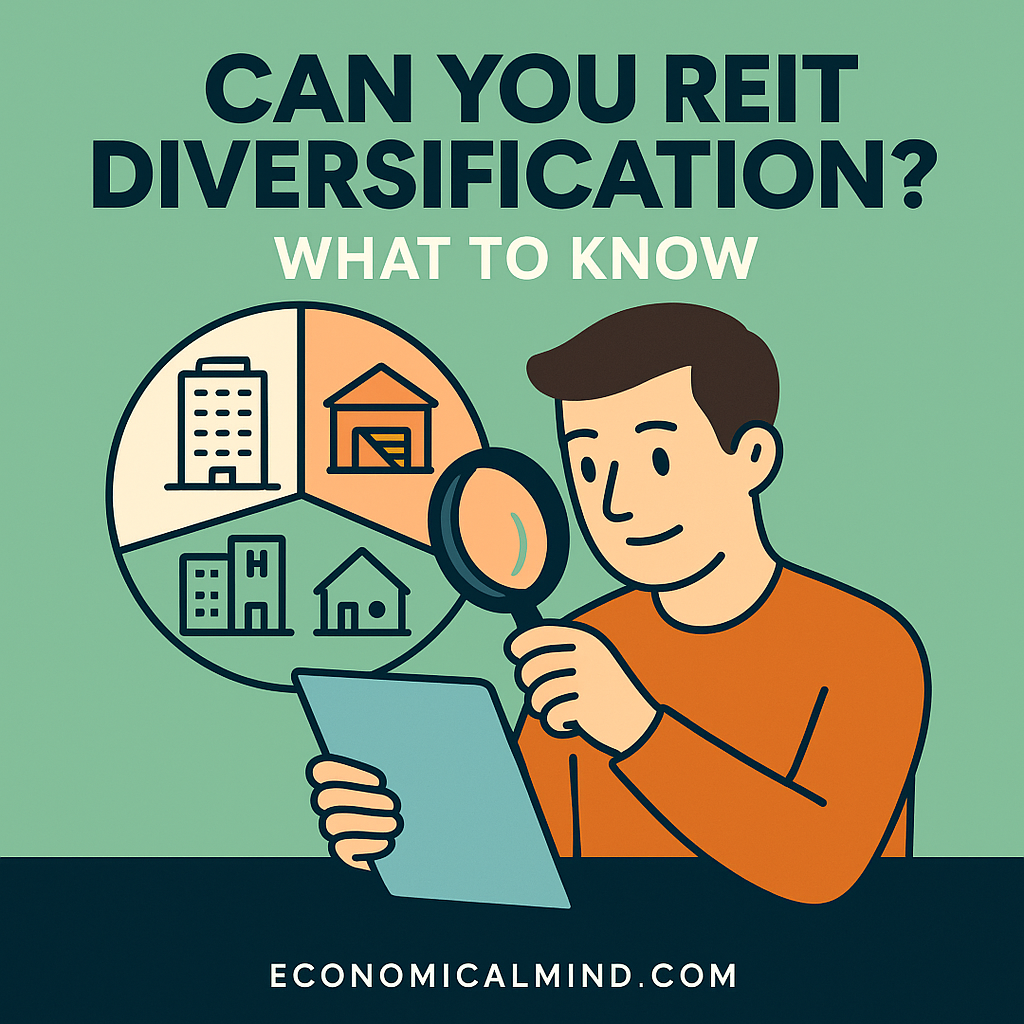
Real Estate Investment Trusts (REITs) make it possible to invest in real estate without buying physical property. But to truly benefit from them, you need to understand REIT diversification — how spreading investments across sectors, regions, and types of properties can help you reduce risk and build steady returns.
What Is REIT Diversification?
REIT diversification means investing in different types of real estate trusts instead of putting all your money into one property sector. Because REITs focus on specific property classes — like apartments, offices, warehouses, or shopping centers — diversification helps smooth out performance when one sector struggles.
Example:
If retail REITs drop due to changing shopping habits, industrial REITs could still perform well thanks to the e-commerce boom.
How REITs Work
A REIT is a company that owns, operates, or finances income-producing real estate. They’re required by law to distribute at least 90% of taxable income to shareholders as dividends, which makes them a popular source of passive income.
You can invest in:
- Equity REITs: Own and manage properties.
- Mortgage REITs: Lend money for real estate investments.
- Hybrid REITs: Combine both property ownership and lending.
Pros of REIT Diversification
1. Reduces Risk
Different property sectors react differently to market trends. Diversification cushions downturns.
2. Consistent Income
REITs pay regular dividends — diversifying helps keep that income stable even when one area dips.
3. Inflation Hedge
Real estate often grows with inflation, and diversified holdings offer added protection.
4. Global Exposure
You can invest in REITs from different regions, balancing local and international trends.
5. Liquidity and Accessibility
REITs trade on stock exchanges, making them easier to buy and sell than physical property.
Cons of Poor REIT Diversification
1. Overconcentration in One Sector
Too much exposure to one market (like retail) can lead to losses if that area declines.
Fix: Balance holdings across commercial, industrial, residential, and healthcare sectors.
2. Market Volatility
Publicly traded REITs move with the stock market.
Fix: Mix in private or non-traded REITs for stability.
3. Interest Rate Sensitivity
REIT prices can fall when interest rates rise.
Fix: Include sectors less affected by borrowing costs, like data centers or logistics.
4. Dividend Taxation
REIT dividends are usually taxed as ordinary income.
Fix: Hold REITs in tax-advantaged accounts like IRAs.
5. Management Differences
Each REIT has its own leadership team and strategy, affecting performance.
Fix: Research management quality and track record before investing.
Best Practices for REIT Diversification
1. Mix Property Types
Combine residential, commercial, healthcare, data center, and storage REITs for balanced exposure.
2. Consider Geography
Diversify across regions — U.S., Europe, and Asia-Pacific markets often perform differently.
3. Blend Equity and Mortgage REITs
Equity REITs provide income stability; mortgage REITs add yield potential.
4. Reinvest Dividends
Compounding your earnings accelerates portfolio growth.
5. Watch Economic Cycles
Certain REITs shine at different times — industrial during growth, residential during slowdowns.
6. Use REIT ETFs
Exchange-traded funds can instantly give you exposure to multiple REITs with one investment.
7. Mind the Fees
Check expense ratios and management costs before investing in REIT funds.
8. Assess Correlations
Choose REITs with different performance patterns to maximize diversification benefits.
9. Review Annually
Rebalance your REIT portfolio each year to align with current market conditions.
10. Align with Risk Tolerance
More conservative investors may favor stable sectors like healthcare or residential REITs.
Key Takeaway
REIT diversification helps investors enjoy the benefits of real estate — steady income, inflation protection, and growth potential — while minimizing sector-specific risks. The goal isn’t to own every REIT but to create balance across types and trends.
